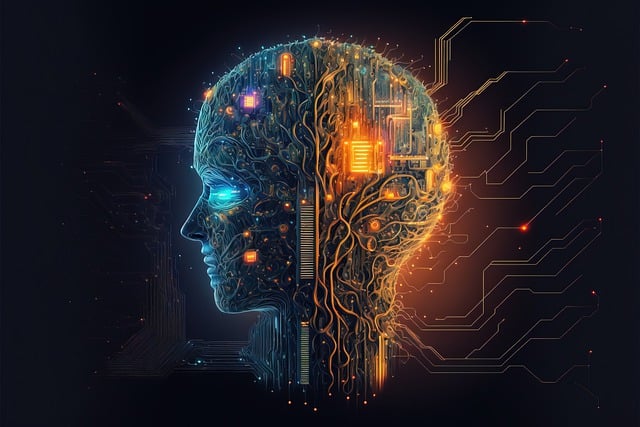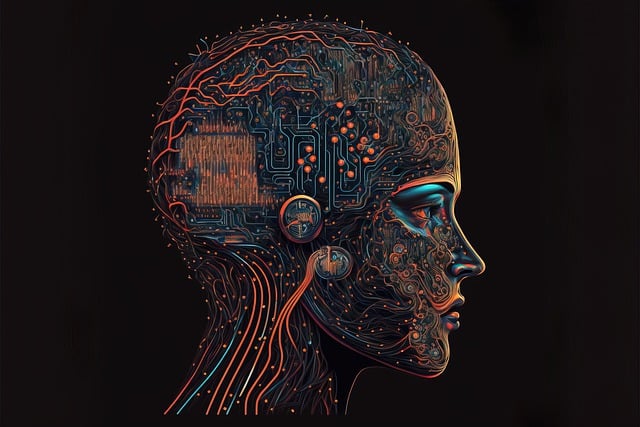The Rise of Artificial Intelligence Trading Bots in 2024
Author: Jameson Richman Expert
Published On: 2024-10-19
Prepared by Jameson Richman and our team of experts with over a decade of experience in cryptocurrency and digital asset analysis. Learn more about us.
As we navigate through 2024, one of the most transformative technologies making waves in the financial sector is the use of artificial intelligence (AI) trading bots. While investments and trading have long been a nuanced art requiring keen intuition and market understanding, the introduction of AI trading bots has begun to revolutionize this process. This article delves into the mechanics of AI trading bots, their advantages and limitations, real-world applications, and future implications in the trading arena.

Understanding AI Trading Bots
Artificial Intelligence trading bots are computer programs that use algorithms and machine-learning techniques to analyze market data, execute trades, and make investment decisions autonomously. These sophisticated systems are designed to identify patterns in vast datasets, allowing them to optimize trading strategies significantly faster than a human ever could.
Key Components of AI Trading Bots
The success of AI trading bots hinges on several critical components:
- Data Collection: AI trading bots rely on vast amounts of historical and real-time market data. This includes price movements, trading volumes, and economic indicators.
- Machine Learning Algorithms: Most AI trading bots utilize machine learning algorithms to identify patterns and trends in the data they analyze. These algorithms can adapt and learn from past trades to improve their strategies.
- Execution Mechanism: Once a trading strategy is formulated, the bot executes trades autonomously on trading platforms, vastly speeding up the trading process.
Advantages of Using AI Trading Bots
The financial landscape is vast and often unpredictable, making AI trading bots a favored option among both retail and institutional investors. Here are some notable advantages:
1. Enhanced Speed and Efficiency
AI trading bots operate at lightning speed, enabling them to execute trades in milliseconds. This speed can make a significant difference in highly volatile markets where timing is crucial.
2. Emotionless Trading
Unlike human traders, AI bots are devoid of emotional biases that can cloud judgment. They analyze data and make decisions based purely on algorithms and metrics, which can lead to more rational trading strategies.
3. Backtesting Capabilities
AI trading bots can be backtested using historical data to evaluate their potential effectiveness before actual deployment. This capability helps traders identify the most promising strategies.
4. Market Diversification
AI trading bots can simultaneously monitor multiple markets and asset classes. This diversification enables traders to capitalize on various investment opportunities and minimize risks associated with market volatility.
5. Accessibility
With various platforms and services available in 2024, even novice traders can access powerful AI trading bots that were once limited to institutional investors. This democratization of trading technology is reshaping the financial landscape.
Limitations of AI Trading Bots
Despite the advantages, AI trading bots are not infallible. They come with their own set of challenges and limitations:
1. Market Volatility
While AI trading bots can analyze data quickly, they can also be influenced by unforeseen events. Sudden market shifts, driven by political instability or natural disasters, can render their algorithms ineffective.
2. Overfitting Risks
There is a risk of overfitting, where an AI model performs exceptionally well on historical data but fails to adapt to newer, unseen data, leading to poor real-time performance.
3. Dependence on Technology
AI trading bots function within the parameters defined by their creators. If a bot's programming contains flaws or outdated algorithms, it can lead to significant financial losses.
4. Ethical Concerns
The deployment of AI trading bots raises several ethical concerns, including market manipulation and fairness. The possibility of large institutional bots overwhelming individual traders prompts discussions on regulations and creating a level playing field.

Real-World Applications of AI Trading Bots in 2024
As signs of the AI revolution permeate through the financial sector, various platforms and institutions have begun integrating AI trading bots for a multitude of purposes:
1. Forex Trading
Foreign Exchange (Forex) markets are often characterized by rapid price movements and volatility. AI trading bots are increasingly employed for currency trading, analyzing data to execute profitable trades in real-time.
2. Stock Trading
Many stock brokerage firms have adopted AI trading bots for algorithmic trading strategies. These bots can analyze company fundamentals, track news sentiment, and execute trades at optimal times.
3. Cryptocurrency Trading
With the surge in digital assets, AI trading bots have found a niche in the cryptocurrency market. They help traders navigate the cryptosphere's complexity by analyzing trends and executing trades without human oversight.
4. Portfolio Management
We are also witnessing the rise of AI-driven robo-advisors that manage investment portfolios based on individual risk tolerance and investment goals. This form of investment automation is expanding into mainstream financial advising.
The Future of AI Trading Bots
As we step further into 2024, the evolution of AI trading bots is set to continue in numerous ways. The ongoing advancements in AI and machine learning technologies will undoubtedly drive improvements in trading strategies and algorithms.
1. Increased Adoption among Retail Investors
The accessibility of AI trading bots is likely to expand even further in 2024. User-friendly platforms will attract more retail investors and democratize financial trading.
2. Enhanced Regulatory Scrutiny
With the rise of AI trading bots, regulatory bodies will need to become more proactive in ensuring fair practices in trading. The creation of guidelines to govern their use can protect both individual investors and market integrity.
3. Improved Algorithmic Capabilities
As AI technology matures, the algorithms powering trading bots are expected to become increasingly adept at navigating complex market environments, making them even more effective.
In Conclusion
The rise of artificial intelligence trading bots in 2024 marks a pivotal moment in the world of finance. Their capacity to execute trades swiftly, adapt strategies based on data, and eliminate emotional biases sets them apart from traditional trading methods. However, this technology also brings with it significant challenges, including market volatility, ethical considerations, and regulatory needs.
In my view, while AI trading bots promise a future filled with opportunities, one must exercise caution and diligence. Relying solely on technology without understanding the market dynamics can lead to severe repercussions. A balanced approach that integrates AI with human insight may yield the best results for traders in this new era of financial investment.